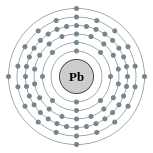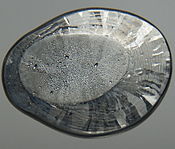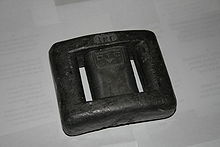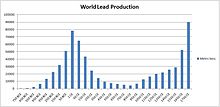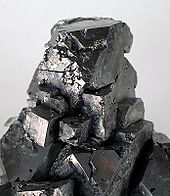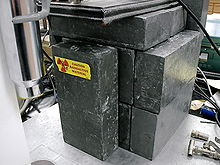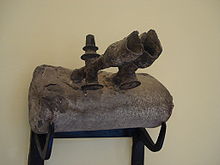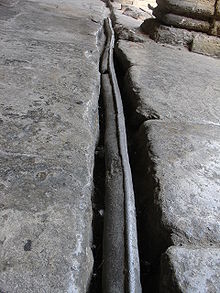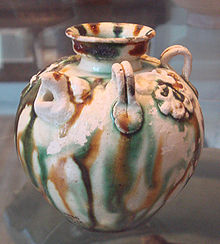
Lead
Background Information
The articles in this Schools selection have been arranged by curriculum topic thanks to SOS Children volunteers. SOS Child sponsorship is cool!
| Lead | ||||||||||||||||||||||||||||||||||||||||||||||
|---|---|---|---|---|---|---|---|---|---|---|---|---|---|---|---|---|---|---|---|---|---|---|---|---|---|---|---|---|---|---|---|---|---|---|---|---|---|---|---|---|---|---|---|---|---|---|
|
82Pb
|
||||||||||||||||||||||||||||||||||||||||||||||
|
||||||||||||||||||||||||||||||||||||||||||||||
| Appearance | ||||||||||||||||||||||||||||||||||||||||||||||
metallic gray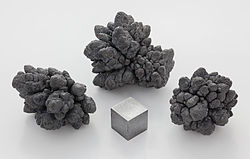 |
||||||||||||||||||||||||||||||||||||||||||||||
| General properties | ||||||||||||||||||||||||||||||||||||||||||||||
| Name, symbol, number | lead, Pb, 82 | |||||||||||||||||||||||||||||||||||||||||||||
| Pronunciation | / ˈ l ɛ d / LED | |||||||||||||||||||||||||||||||||||||||||||||
| Element category | post-transition metal | |||||||||||||||||||||||||||||||||||||||||||||
| Group, period, block | 14, 6, p | |||||||||||||||||||||||||||||||||||||||||||||
| Standard atomic weight | 207.2 | |||||||||||||||||||||||||||||||||||||||||||||
| Electron configuration | [Xe] 4f14 5d10 6s2 6p2 2, 8, 18, 32, 18, 4 |
|||||||||||||||||||||||||||||||||||||||||||||
| History | ||||||||||||||||||||||||||||||||||||||||||||||
| Discovery | Middle Easterns ( 7000 BC) | |||||||||||||||||||||||||||||||||||||||||||||
| Physical properties | ||||||||||||||||||||||||||||||||||||||||||||||
| Phase | solid | |||||||||||||||||||||||||||||||||||||||||||||
| Density (near r.t.) | 11.34 g·cm−3 | |||||||||||||||||||||||||||||||||||||||||||||
| Liquid density at m.p. | 10.66 g·cm−3 | |||||||||||||||||||||||||||||||||||||||||||||
| Melting point | 600.61 K, 327.46 °C, 621.43 °F | |||||||||||||||||||||||||||||||||||||||||||||
| Boiling point | 2022 K, 1749 °C, 3180 °F | |||||||||||||||||||||||||||||||||||||||||||||
| Heat of fusion | 4.77 kJ·mol−1 | |||||||||||||||||||||||||||||||||||||||||||||
| Heat of vaporization | 179.5 kJ·mol−1 | |||||||||||||||||||||||||||||||||||||||||||||
| Molar heat capacity | 26.650 J·mol−1·K−1 | |||||||||||||||||||||||||||||||||||||||||||||
| Vapor pressure | ||||||||||||||||||||||||||||||||||||||||||||||
|
||||||||||||||||||||||||||||||||||||||||||||||
| Atomic properties | ||||||||||||||||||||||||||||||||||||||||||||||
| Oxidation states | 4, 3, 2, 1 ( Amphoteric oxide) |
|||||||||||||||||||||||||||||||||||||||||||||
| Electronegativity | 2.33 (Pauling scale) | |||||||||||||||||||||||||||||||||||||||||||||
| Ionization energies | 1st: 715.6 kJ·mol−1 | |||||||||||||||||||||||||||||||||||||||||||||
| 2nd: 1450.5 kJ·mol−1 | ||||||||||||||||||||||||||||||||||||||||||||||
| 3rd: 3081.5 kJ·mol−1 | ||||||||||||||||||||||||||||||||||||||||||||||
| Atomic radius | 175 pm | |||||||||||||||||||||||||||||||||||||||||||||
| Covalent radius | 146±5 pm | |||||||||||||||||||||||||||||||||||||||||||||
| Van der Waals radius | 202 pm | |||||||||||||||||||||||||||||||||||||||||||||
| Miscellanea | ||||||||||||||||||||||||||||||||||||||||||||||
| Crystal structure | face-centered cubic | |||||||||||||||||||||||||||||||||||||||||||||
| Magnetic ordering | diamagnetic | |||||||||||||||||||||||||||||||||||||||||||||
| Electrical resistivity | (20 °C) 208 nΩ·m | |||||||||||||||||||||||||||||||||||||||||||||
| Thermal conductivity | 35.3 W·m−1·K−1 | |||||||||||||||||||||||||||||||||||||||||||||
| Thermal expansion | (25 °C) 28.9 µm·m−1·K−1 | |||||||||||||||||||||||||||||||||||||||||||||
| Speed of sound (thin rod) | ( r.t.) (annealed) 1190 m·s−1 |
|||||||||||||||||||||||||||||||||||||||||||||
| Young's modulus | 16 GPa | |||||||||||||||||||||||||||||||||||||||||||||
| Shear modulus | 5.6 GPa | |||||||||||||||||||||||||||||||||||||||||||||
| Bulk modulus | 46 GPa | |||||||||||||||||||||||||||||||||||||||||||||
| Poisson ratio | 0.44 | |||||||||||||||||||||||||||||||||||||||||||||
| Mohs hardness | 1.5 | |||||||||||||||||||||||||||||||||||||||||||||
| Brinell hardness | 38.3 MPa | |||||||||||||||||||||||||||||||||||||||||||||
| CAS registry number | 7439-92-1 | |||||||||||||||||||||||||||||||||||||||||||||
| Most stable isotopes | ||||||||||||||||||||||||||||||||||||||||||||||
| Main article: Isotopes of lead | ||||||||||||||||||||||||||||||||||||||||||||||
|
||||||||||||||||||||||||||||||||||||||||||||||
Lead is a chemical element in the carbon group with symbol Pb (from Latin: plumbum) and atomic number 82. Lead is a soft and malleable metal, which is regarded as a heavy metal and poor metal. Metallic lead has a bluish-white colour after being freshly cut, but it soon tarnishes to a dull grayish colour when exposed to air. Lead has a shiny chrome-silver luster when it is melted into a liquid.
Lead is used in building construction, lead-acid batteries, bullets and shot, weights, as part of solders, pewters, fusible alloys, and as a radiation shield. Lead has the highest atomic number of all of the stable elements, although the next higher element, bismuth, has a half-life that is so long (much longer than the age of the universe) that it can be considered stable. Its four stable isotopes have 82 protons, a magic number in the nuclear shell model of atomic nuclei.
Lead, at certain contact degrees, is a poisonous substance to animals, including humans. It damages the nervous system and causes brain disorders. Excessive lead also causes blood disorders in mammals. Like the element mercury, another heavy metal, lead is a neurotoxin that accumulates both in soft tissues and the bones. Lead poisoning has been documented from ancient Rome, ancient Greece, and ancient China.
Characteristics
Lead is a bright and silvery metal with a very slight shade of blue in a dry atmosphere. Upon contact with air, it begins to tarnish by forming a complex mixture of compounds depending on the conditions. The colour of the compounds can vary. The tarnish layer can contain significant amounts of carbonates and hydroxycarbonates. It has a few characteristic properties: high density, softness, ductility and malleability, poor electrical conductivity compared to other metals, high resistance to corrosion, and ability to react with organic chemicals.
Various traces of other metals change its properties significantly: the addition of small amounts of antimony or copper to lead increases the alloy's hardness and improves corrosion resistance from sulfuric acid. A few other metals also improve only hardness and fight metal fatigue, such as cadmium, tin, or tellurium; metals like sodium or calcium also have this ability, but they weaken the chemical stability. Finally, zinc and bismuth simply impair the corrosion resistance (0.1% bismuth content is the industrial usage threshold). In return, lead impurities mostly worsen the quality of industrial materials, although there are exceptions: for example, small amounts of lead improve the ductility of steel.
Lead has only one common allotrope, which is face-centered cubic, with the lead–lead distance being 349 pm. At 327.5 °C (621.5 °F), lead melts; the melting point is above that of tin (232 °C, 449.5 °F), but significantly below that of germanium (938 °C, 1721 °F). The boiling point of lead is 1749 °C (3180 °F), which is below those of both tin (2602 °C, 4716 °F) and germanium (2833 °C, 5131 °F). Densities increase down the group: the Ge and Sn values (5.23 and 7.29 g·cm−3, respectively) are significantly below that of lead: 11.32 g·cm−3.
A lead atom has 82 electrons, having an electronic configuration of [Xe]4f145d106s26p2. In its compounds, lead (unlike the other group 14 elements) most commonly loses its two and not four outermost electrons, becoming lead(II) ions, Pb2+. Such unusual behaviour is rationalized by considering the inert pair effect, which occurs because of the stabilization of the 6s-orbital due to relativistic effects, which are stronger closer to the bottom of the periodic table. Tin shows a weaker such effect: tin(II) is still a reducer.
The figures for electrode potential show that lead is only slightly easier to oxidize than hydrogen. Lead thus can dissolve in acids, but this is often impossible due to specific problems (such as the formation of insoluble salts). Powdered lead burns with a bluish-white flame. As with many metals, finely divided powdered lead exhibits pyrophoricity. Toxic fumes are released when lead is burned.
Isotopes
Lead occurs naturally on Earth exclusively in the form of four isotopes: lead-204, −206, −207, and −208. All four can be radioactive as the hypothetical alpha decay of any would be exothermic, but the lower half-life limit has been put only for lead-204: over 1.4×1017 years. This effect is, however, so weak that natural lead poses no radiation hazard. Three isotopes are also found in three of the four major decay chains: lead-206, −207 and −208 are final decay products of uranium-238, uranium-235, and thorium-232, respectively. Since the amounts of them in nature depend also on other elements' presence, the isotopic composition of natural lead varies by sample: in particular, the relative amount of lead-206 varies between 20.84% and 27.78%.
Aside from the stable ones, thirty-four radioisotopes have been synthesized: they have mass numbers of 178–215. Lead-205 is the most stable radioisotope of lead, with a half-life of over 107 years. 47 nuclear isomers (long-lived excited nuclear states), corresponding to 24 lead isotopes, have been characterized. The most long-lived isomer is lead-204m2 (half-life of about 1.1 hours).
Chemical reactivity
Lead is classified as a post-transition metal and is also a member of the carbon group. Lead only forms a protective oxide layer although finely powdered highly purified lead can ignite in air. Melted lead is oxidized in air to lead monoxide. All chalcogens oxidize lead upon heating.
Fluorine does not oxidize cold lead. Hot lead can be oxidized, but the formation of a protective halide layer lowers the intensity of the reaction above 100 °C (210 °F). The reaction with chlorine is similar: thanks to the chloride layer, lead persistence against chlorine surpasses those of copper or steel up to 300 °C (570 °F).
Water in the presence of oxygen attacks lead to start an accelerating reaction. The presence of carbonates or sulfates results in the formation of insoluble lead salts, which protect the metal from corrosion. So does carbon dioxide, as the insoluble lead carbonate is formed; however, an excess of the gas leads to the formation of the soluble bicarbonate; this makes the use of lead pipes dangerous. Lead dissolves in organic acids (in the presence of oxygen) and concentrated (≥80%) sulfuric acid thanks to complexation; however, it is only weakly affected by hydrochloric acid and is stable against hydrofluoric acid, as the corresponding halides are weakly soluble. Lead also dissolves in quite concentrated alkalis (≥10%) because of the amphoteric character and solubility of plumbites.
Compounds
Lead compounds exist mainly in two main oxidation states, +2 and +4. The former is more common. Inorganic lead(IV) compounds are typically strong oxidants or exist only in highly acidic solutions.
Oxides and sulfides
Three oxides are known: lead(II) oxide or lead monoxide (PbO), lead tetroxide (Pb3O4) (sometimes called "minium"), and lead dioxide (PbO2). The monoxide exists as two allotropes: α-PbO and β-PbO, both with layer structure and tetracoordinated lead. The alpha polymorph is red-colored and has the Pb–O distance of 230 pm; the beta polymorph is yellow-colored and has the Pb–O distance of 221 and 249 pm (due to asymmetry). Both polymorphs can exist under standard conditions (beta with small (10−5 relative) impurities, such as Si, Ge, Mo, etc.). PbO reacts with acids to form salts, and with alkalis to give plumbites, [Pb(OH)3]− or [Pb(OH)4]2−. The monoxide oxidizes in air to trilead tetroxide, which at 550 °C (1020 °F) degrades back into PbO.
The dioxide may be prepared by, for example, halogenization of lead(II) salts. Regardless the polymorph, it has a black-brown colour. The alpha allotrope is rhombohedral, and the beta allotrope is tetragonal. Both allotropes are black-brown in colour and always contain some water, which cannot be removed, as heating also causes decomposition (to PbO and Pb3O4). The dioxide is a powerful oxidizer: it can oxidize hydrochloric and sulfuric acids. It does not react with alkaline solution, but reacts with solid alkalis to give hydroxyplumbates, or with basic oxides to give plumbates.
Reaction of lead salts with hydrogen sulfide yields lead monosulfide. The solid has the rocksalt-like simple cubic structure, which it keeps up to the melting point, 1114 °C (2037 °F). When heated in air, it oxidizes to the sulfate and then the monoxide. Lead monosulfide is almost insoluble in water, weak acids, and (NH4)2S/(NH4)2S2 solution is the key for separation of lead from analytical groups I to III ions, tin, arsenic, and antimony. However, it dissolves in nitric and hydrochloric acids, to give elemental sulfur and hydrogen sulfide, respectively. Upon heating under high pressures with sulfur, it gives the disulfide. In the compound, the lead atoms are linked octahedrally with the sulfur atoms. It is also a semiconductor. A mixture of the monoxide and the monosulfide when heated forms the metal.
- 2 PbO + PbS → 3 Pb + SO2
Halides and other salts
Heating lead carbonate with hydrogen fluoride yields the hydrofluoride, which decomposes to the difluoride when it melts. This white crystalline powder is more soluble than the diiodide, but less than the dibromide and the dichloride. The tetrafluoride, a yellow crystalline powder, is unstable.
Other dihalides are obtained upon heating lead(II) salts with the halides of other metals; lead dihalides precipitate to give white orthorhombic crystals (diiodide forms yellow hexagonal crystals). They can also be obtained by direct reaction of their constituent elements at temperature exceeding melting points of dihalides. Their solubility increases with temperature; adding more halides first decreases the solubility, but then increases due to complexation, with the maximum coordination number being 6. The complexation depends on halide ion numbers, atomic number of the alkali metal, the halide of which is added, temperature and solution ionic strength. The tetrachloride is obtained upon dissolving the dioxide in hydrochloric acid; to prevent the exothermic decomposition, it is kept under concentrated sulfuric acid. The tetrabromide may not, and the tetraiodide definitely does not exist. The diastatide has also been prepared.
The metal is not attacked by sulfuric or hydrochloric acids. It dissolves in nitric acid with the evolution of nitric oxide gas to form dissolved Pb(NO3)2. It is a well-soluble solid in water; it is thus a key to receive the precipitates of halides, sulfate, chromate, carbonate, and basic carbonate Pb3(OH)2(CO3)2 salts of lead. |
Organolead
The best-known compounds are the two simplest plumbane derivatives: tetramethyllead (TML) and tetraethyllead (TEL). The homologs of these, as well as hexaethyldilead (HEDL), are of lesser stability. The tetralkyl derivatives contain lead(IV), where the Pb–C bonds are covalent. They thus resemble typical organic compounds.
Lead readily forms an equimolar alloy with sodium metal that reacts with alkyl halides to form organometallic compounds of lead such as tetraethyllead. The Pb–C bond energies in TML and TEL are only 167 and 145 kJ/mol; the compounds thus decompose upon heating, with first signs of TEL composition seen at 100 °C (210 °F). The pyrolysis yields of elemental lead and alkyl radicals; their interreaction causes the synthesis of HEDL. TML and TEL also decompose upon sunlight or UV light. In presence of chlorine, the alkyls begin to be replaced with chlorides; the R2PbCl2 in the presence of HCl (a by-product of the previous reaction) leads to the complete mineralization to give PbCl2. Reaction with bromine follows the same principle.
History
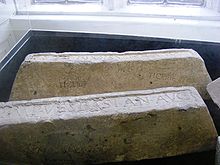
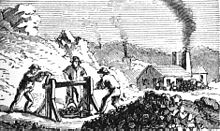
Lead has been commonly used for thousands of years because it is widespread, easy to extract and easy to work with. It is highly malleable as well as easy to smelt. Metallic lead beads dating back to 6400 BCE have been found in Çatalhöyük in modern-day Turkey. In the early Bronze Age, lead was used with antimony and arsenic.
The largest preindustrial producer of lead was the Roman economy, with an estimated annual output of 80,000 tonnes, which was typically won as a by-product of extensive silver smelting. Roman mining activities occurred in Central Europe, Roman Britain, the Balkans, Greece, Asia Minor and Hispania which alone accounted for 40% of world production.
Roman lead pipes often bore the insignia of Roman emperors (see Roman lead pipe inscriptions). Lead plumbing in the Latin West may have been continued beyond the age of Theoderic the Great into the medieval period. Many Roman "pigs" (ingots) of lead figure in Derbyshire lead mining history and in the history of the industry in other English centers. The Romans also used lead in molten form to secure iron pins that held together large limestone blocks in certain monumental buildings. In alchemy, lead was thought to be the oldest metal and was associated with the planet Saturn. Alchemists accordingly used Saturn's symbol (the scythe, ♄) to refer to lead.
Up to the 17th century, tin was often not distinguished from lead: lead was called plumbum nigrum (literally, "black lead"), while tin was called plumbum candidum (literally, "bright lead"). Their inherence through history can also be seen in other languages: the word "olovo" means lead in Czech, but in Russian it ("олово") means tin. Lead's symbol Pb is an abbreviation of its Latin name plumbum for soft metals; the English words " plumbing", " plumber", "plumb", and " plumb-bob" also derive from this Latin root.
Lead production in the US commenced as early as the late 1600s by Indians in the The Southeast Missouri Lead District, commonly called the Lead Belt, is a lead mining district in the southeastern part of Missouri. Significant among Missouri's lead mining concerns in the district was the Desloge Family and Desloge Consolidated Lead Company in Desloge, Missouri and Bonne Terre – having been active in lead trading, mining and lead smelting from 1823 in Potosi to 1929.
Occurrence
Metallic lead does occur in nature, but it is rare. Lead is usually found in ore with zinc, silver and (most abundantly) copper, and is extracted together with these metals. The main lead mineral is galena (PbS), which contains 86.6% lead by weight. Other common varieties are cerussite (PbCO3) and anglesite (PbSO4).
Ore processing
Most ores contain less than 10% lead, and ores containing as little as 3% lead can be economically exploited. Ores are crushed and concentrated by froth flotation typically to 70% or more. Sulfide ores are roasted, producing primarily lead oxide and a mixture of sulfates and silicates of lead and other metals contained in the ore. Lead oxide from the roasting process is reduced in a coke-fired blast furnace to the metal. Additional layers separate in the process and float to the top of the metallic lead. These are slag (silicates containing 1.5% lead), matte (sulfides containing 15% lead), and speiss (arsenides of iron and copper). These wastes contain concentrations of copper, zinc, cadmium, and bismuth that can be recovered economically, as can their content of unreduced lead.
Metallic lead that results from the roasting and blast furnace processes still contains significant contaminants of arsenic, antimony, bismuth, zinc, copper, silver, and gold. The melt is treated in a reverberatory furnace with air, steam, and sulfur, which oxidizes the contaminants except silver, gold, and bismuth. The oxidized contaminants are removed by drossing, where they float to the top and are skimmed off. Since lead ores contain significant concentrations of silver, the smelted metal also is commonly contaminated with silver. Metallic silver as well as gold is removed and recovered economically by means of the Parkes process. Desilvered lead is freed of bismuth according to the Betterton-Kroll process by treating it with metallic calcium and magnesium, which forms a bismuth dross that can be skimmed off. Very pure lead can be obtained by processing smelted lead electrolytically by means of the Betts process. The process uses anodes of impure lead and cathodes of pure lead in an electrolyte of silica fluoride.
Production and recycling
Production and consumption of lead is increasing worldwide. Total annual production is about 8 million tonnes; about half is produced from recycled scrap. The top lead producing countries, as of 2008, are Australia, China, USA, Peru, Canada, Mexico, Sweden, Morocco, South Africa and North Korea. Australia, China and the United States account for more than half of primary production. In 2010, 9.6 million tonnes of lead were produced, of which 4.1 million tonnes came from mining.
At current use rates, the supply of lead is estimated to run out in 42 years. Environmental analyst Lester Brown has suggested lead could run out within 18 years based on an extrapolation of 2% growth per year. This may need to be reviewed to take account of renewed interest in recycling, and rapid progress in fuel cell technology. According to the International Resource Panel's Metal Stocks in Society report, the global per capita stock of lead in use in society is 8 kg. Much of this is in more-developed countries (20–150 kg per capita) rather than less-developed countries (1–4 kg per capita).
Applications
Elemental form
Contrary to popular belief, pencil leads in wooden pencils have never been made from lead. The term comes from the Roman stylus, called the penicillus, a small brush used for painting. When the pencil originated as a wrapped graphite writing tool, the particular type of graphite being used was named plumbago (lit. act for lead, or lead mockup).
Lead is used in applications where its low melting point, ductility and high density are advantageous. The low melting point makes casting of lead easy, and therefore small arms ammunition and shotgun pellets can be cast with minimal technical equipment. It is also inexpensive and denser than other common metals.
Because of its high density and resistance from corrosion, lead is used for the ballast keel of sailboats. Its high density allows it to counterbalance the heeling effect of wind on the sails while at the same time occupying a small volume and thus offering the least underwater resistance. For the same reason it is used in scuba diving weight belts to counteract the diver's natural buoyancy and that of his equipment. It does not have the weight-to-volume ratio of many heavy metals, but its low cost increases its use in these and other applications.
More than half of the US lead production (at least 1.15 million tonnes in 2000) is used for automobiles, mostly as electrodes in the lead–acid battery, used extensively as a car battery.
Cathode ( reduction)
- PbO2 + 4 H+ + SO2−
4 + 2e– → PbSO4 + 2 H2O
Anode ( oxidation)
- Pb + SO2−
4 → PbSO4 + 2e–
Lead is used as electrodes in the process of electrolysis. It is used in solder for electronics, although this usage is being phased out by some countries to reduce the amount of environmentally hazardous waste, and in high voltage power cables as sheathing material to prevent water diffusion into insulation. Lead is one of three metals used in the Oddy test for museum materials, helping detect organic acids, aldehydes, and acidic gases. It is also used as shielding from radiation (e.g., in X-ray rooms). Molten lead is used as a coolant (e.g., for lead cooled fast reactors).
Lead is added to brass to reduce machine tool wear. In the form of strips, or tape, lead is used for the customization of tennis rackets. Tennis rackets of the past sometimes had lead added to them by the manufacturer to increase weight. It is also used to form glazing bars for stained glass or other multi-lit windows. The practice has become less common, not for danger but for stylistic reasons. Lead, or sheet-lead, is used as a sound deadening layer in some areas in wall, floor and ceiling design in sound studios where levels of airborne and mechanically produced sound are targeted for reduction or virtual elimination. It is the traditional base metal of organ pipes, mixed with varying amounts of tin to control the tone of the pipe.
Lead has many uses in the construction industry (e.g., lead sheets are used as architectural metals in roofing material, cladding, flashing, gutters and gutter joints, and on roof parapets). Detailed lead moldings are used as decorative motifs used to fix lead sheet. Lead is still widely used in statues and sculptures. Lead is often used to balance the wheels of a car; this use is being phased out in favour of other materials for environmental reasons. Owing to its half-life of 22.20 years, the radioactive isotope 210Pb is used for dating material from marine sediment cores by radiometric methods.
Compounds
Lead compounds are used as a coloring element in ceramic glazes, notably in the colors red and yellow. Lead is frequently used in polyvinyl chloride (PVC) plastic, which coats electrical cords.
Lead is used in some candles to treat the wick to ensure a longer, more even burn. Because of the dangers, European and North American manufacturers use more expensive alternatives such as zinc. Lead glass is composed of 12–28% lead oxide. It changes the optical characteristics of the glass and reduces the transmission of radiation.
Some artists using oil-based paints continue to use lead carbonate white, citing its properties in comparison with the alternatives. Tetra-ethyl lead is used as an anti-knock additive for aviation fuel in piston-driven aircraft. Lead-based semiconductors, such as lead telluride, lead selenide and lead antimonide are finding applications in photovoltaic (solar energy) cells and infrared detectors.
Lead, in either pure form or alloyed with tin, or antimony is the traditional material for bullets and shot in firearms use.
Former applications
Lead pigments were used in lead paint for white as well as yellow, orange, and red. Most uses have been discontinued due of the dangers of lead poisoning. Beginning April 22, 2010, US federal law requires that contractors performing renovation, repair, and painting projects that disturb more than six square feet of paint in homes, child care facilities, and schools built before 1978 must be certified and trained to follow specific work practices to prevent lead contamination. Lead chromate is still in industrial use. Lead carbonate (white) is the traditional pigment for the priming medium for oil painting, but it has been largely displaced by the zinc and titanium oxide pigments. It was also quickly replaced in water-based painting mediums. Lead carbonate white was used by the Japanese geisha and in the West for face-whitening make-up, which was detrimental to health.
Lead is the hot metal that was used in hot metal typesetting. It was used for plumbing (hence the name) as well as a preservative for food and drink in Ancient Rome. Until the early 1970s, lead was used for joining cast iron water pipes and used as a material for small diameter water pipes.
Tetraethyllead was used in leaded fuels to reduce engine knocking, but this practice has been phased out across many countries of the world in efforts to reduce toxic pollution that affected humans and the environment.
Lead was used to make bullets for slings. Lead was used for shotgun pellets in the US until about 1992 when it was outlawed (for waterfowl hunting only) and replaced by non-toxic shot, primarily steel pellets. In the Netherlands, the use of lead shot for hunting and sport shooting was banned in 1993, which caused a large drop in lead emission, from 230 tonnes in 1990 to 47.5 tonnes in 1995, two years after the ban.
Lead was a component of the paint used on children's toys – now restricted in the United States and across Europe ( ROHS Directive). Lead was used in car body filler, which was used in many custom cars in the 1940s–60s. Hence the term Leadsled. Lead is a superconductor with a transition temperature of 7.2 K, and therefore IBM tried to make a Josephson effect computer out of a lead alloy.
Lead was also used in pesticides before the 1950s, when fruit orchards were treated especially against the codling moth. A lead cylinder attached to a long line was used by sailors for the vital navigational task of determining water depth by heaving the lead at regular intervals. A soft tallow insert at its base allowed the nature of the sea bed to be determined, further aiding position finding.
Health effects
Lead is a highly poisonous metal (regardless if inhaled or swallowed), affecting almost every organ and system in the body. The main target for lead toxicity is the nervous system, both in adults and children. Long-term exposure of adults can result in decreased performance in some tests that measure functions of the nervous system. Long-term exposure to lead or its salts (especially soluble salts or the strong oxidant PbO2) can cause nephropathy, and colic-like abdominal pains. It may also cause weakness in fingers, wrists, or ankles. Lead exposure also causes small increases in blood pressure, particularly in middle-aged and older people and can cause anaemia. Exposure to high lead levels can severely damage the brain and kidneys in adults or children and ultimately cause death. In pregnant women, high levels of exposure to lead may cause miscarriage. Chronic, high-level exposure have shown to reduce fertility in males. Lead also damages nervous connections (especially in young children) and cause blood and brain disorders. Lead poisoning typically results from ingestion of food or water contaminated with lead; but may also occur after accidental ingestion of contaminated soil, dust, or lead-based paint. It is rapidly absorbed into the bloodstream and is believed to have adverse effects on the central nervous system, the cardiovascular system, kidneys, and the immune system. The component limit of lead (1.0 μg/g) is a test benchmark for pharmaceuticals, representing the maximum daily intake an individual should have. However, even at this low level, a prolonged intake can be hazardous to human beings. The treatment for lead poisoning consists of dimercaprol and succimer.
| NFPA 704 |
|---|
| "Fire diamond" for lead granules |
The concern about lead's role in cognitive deficits in children has brought about widespread reduction in its use (lead exposure has been linked to learning disabilities). Most cases of adult elevated blood lead levels are workplace-related. High blood levels are associated with delayed puberty in girls. Lead has been shown many times to permanently reduce the cognitive capacity of children at extremely low levels of exposure.
During the 20th century, the use of lead in paint pigments was sharply reduced because of the danger of lead poisoning, especially to children. By the mid-1980s, a significant shift in lead end-use patterns had taken place. Much of this shift was a result of the U.S. lead consumers' compliance with environmental regulations that significantly reduced or eliminated the use of lead in non-battery products, including gasoline, paints, solders, and water systems. Lead use is being further curtailed by the European Union's RoHS directive. Lead may still be found in harmful quantities in stoneware, vinyl (such as that used for tubing and the insulation of electrical cords), and Chinese brass. Older houses may still contain substantial amounts of lead paint. White lead paint has been withdrawn from sale in industrialized countries, but the yellow lead chromate is still in use. Old paint should not be stripped by sanding, as this produces inhalable dust.
Lead salts used in pottery glazes have on occasion caused poisoning, when acidic drinks, such as fruit juices, have leached lead ions out of the glaze. It has been suggested that what was known as " Devon colic" arose from the use of lead-lined presses to extract apple juice in the manufacture of cider. Lead is considered to be particularly harmful for women's ability to reproduce. Lead(II) acetate (also known as sugar of lead) was used in the Roman Empire as a sweetener for wine, and some consider this a plausible explanation for the dementia of many Roman emperors, and, that chronic lead poisoning contributed to the empire's gradual decline. (see Decline of the Roman Empire#Lead poisoning)
Biochemistry of poisoning
In the human body, lead inhibits porphobilinogen synthase and ferrochelatase, preventing both porphobilinogen formation and the incorporation of iron into protoporphyrin IX, the final step in heme synthesis. This causes ineffective heme synthesis and subsequent microcytic anaemia. At lower levels, it acts as a calcium analog, interfering with ion channels during nerve conduction. This is one of the mechanisms by which it interferes with cognition. Acute lead poisoning is treated using disodium calcium edetate: the calcium chelate of the disodium salt of ethylene-diamine-tetracetic acid ( EDTA). This chelating agent has a greater affinity for lead than for calcium and so the lead chelate is formed by exchange. This is then excreted in the urine leaving behind harmless calcium. According to the Agency for Toxic Substance and Disease Registry, a small amount of ingested lead (1%) will store itself in bones, and the rest will be excreted by an adult through urine and feces within a few weeks of exposure. However, only about 32% of lead will be excreted by a child.
Exposure to lead and lead chemicals can occur through inhalation, ingestion and dermal contact. Most exposure occurs through ingestion or inhalation; in the U.S. the skin exposure is unlikely as leaded gasoline additives are no longer used. Lead exposure is a global issue as lead mining and lead smelting are common in many countries. Most countries have stopped using lead-containing gasoline by 2007. Lead exposure mostly occurs through ingestion. Lead paint is the major source of lead exposure for children. As lead paint deteriorates, it peels, is pulverized into dust and then enters the body through hand-to-mouth contact or through contaminated food, water or alcohol. Ingesting certain home remedy medicines may also expose people to lead or lead compounds. Lead can be ingested through fruits and vegetables contaminated by high levels of lead in the soils they were grown in. Soil is contaminated through particulate accumulation from lead in pipes, lead paint and residual emissions from leaded gasoline that was used before the Environment Protection Agency issue the regulation around 1980. The use of lead for water pipes is problematic in areas with soft or (and) acidic water. Hard water forms insoluble layers in the pipes while soft and acidic water dissolves the lead pipes. Inhalation is the second major pathway of exposure, especially for workers in lead-related occupations. Almost all inhaled lead is absorbed into the body, the rate is 20–70% for ingested lead; children absorb more than adults. Dermal exposure may be significant for a narrow category of people working with organic lead compounds, but is of little concern for general population. The rate of skin absorption is also low for inorganic lead.
